PHÂN ĐỘ NHIỄM TRÙNG ĐƯỜNG MẬT DO SỎI THEO TOKYO 2018 Ở BỆNH NHÂN TRÊN 80 TUỔI VÀ KẾT QUẢ DẪN LƯU MẬT TẠI BỆNH VIỆN ĐẠI HỌC Y HÀ NỘI
Nội dung chính của bài viết
Tóm tắt
Đặt vấn đề: Điều trị sỏi mật cho người lớn tuổi vẫn là thách thức trong thực hành lâm sàng, trong đó kiểm soát tình trạng tắc mật và nhiễm trùng là quan trọng nhất. Nghiên cứu này nhằm đánh giá phân loại mức độ nhiễm trùng và tính an toàn và kết quả của phương pháp dẫn lưu đường mật qua da ở bệnh nhân lớn tuổi (≥80) có nhiễm trùng đường mật. Đối tượng và phương pháp: số liệu được lấy từ 30 bệnh nhân từ 80 tuổi trở lên bị nhiễm trùng đường mật do sỏi tại bệnh viện Đại học Y Hà Nội từ tháng 1 năm 2023 đến tháng 12 năm 2024. Kết quả: Trong số 30 bệnh nhân với tuổi trung bình là 85,87 ± 4.73 tuổi. Triệu chứng lâm sàng thường gặp nhất là đau bụng (96,7%), kế tiếp là sốt (76,7%) và vàng da (36,7%), trong đấy có 20 bệnh nhân được dẫn lưu đường mật. Số lượng bệnh nhân nhiễm trùng đường mật được phân độ II theo Tokyo guidelines 2018 chiếm tỉ lệ cao nhất với 21/30 bệnh nhân. Các chỉ số Billirubin trực tiếp và gián tiếp và chỉ số bạch cầu đều giảm có ý nghĩa thống kê sau dẫn lưu. Không có sự khác biệt có ý nghĩa thống kê về thời gian nằm viện giữa các nhóm phân độ theo Tokyo. Kết luận: Dẫn lưu đường mật qua da là một phương pháp hiệu quả trong điều trị nhiễm trùng đường mật do sỏi ở bệnh nhân lớn tuổi, giúp giảm áp lực đường mật và kiểm soát tình trạng nhiễm trùng.
Chi tiết bài viết
Từ khóa
nhiễm trùng, bệnh nhân lớn tuổi, dẫn lưu đường mật
Tài liệu tham khảo
2. Kokas B, Szijártó A, Farkas N, et al. Percutaneous transhepatic drainage is safe and effective in biliary obstruction-A single-center experience of 599 patients. PloS One. 2021; 16(11): e0260223. doi: 10.1371/journal.pone. 0260223
3. Agarwal N, Sharma BC, Sarin SK. Endoscopic management of acute cholangitis in elderly patients. World J Gastroenterol WJG. 2006; 12(40):6551-6555. doi:10.3748/wjg. v12.i40.6551
4. Iqbal U, Khara HS, Hu Y, et al. Emergent versus urgent ERCP in acute cholangitis: a systematic review and meta-analysis. Gastrointest Endosc. 2020;91(4):753-760.e4. doi: 10.1016/j.gie.2019.09.040
5. Kiriyama S, Kozaka K, Takada T, et al. Tokyo Guidelines 2018: diagnostic criteria and severity grading of acute cholangitis (with videos). J Hepato-Biliary-Pancreat Sci. 2018;25(1):17-30. doi:10.1002/jhbp.512
6. Thuluvath AJ, Ahn JC, Rattan P, et al. Evaluation of Charcot Triad, Reynolds Pentad, and Tokyo Guidelines for Diagnosis of Cholangitis Secondary to Choledocholithiasis Across Patient Age Groups. Mayo Clin Proc Innov Qual Outcomes. 2021;5(2):377-387. doi: 10.1016/j. mayocpiqo.2021.01.008
7. Chan KS, Mohan R, Low JK, Junnarkar SP, Huey CWT, Shelat VG. Elderly patients (≥ 80 years) with acute calculous cholangitis have similar outcomes as non-elderly patients (< 80 years): Propensity score-matched analysis. World J Hepatol. 2021;13(4):456-471. doi:10.4254/wjh. v13.i4.456
8. Hưng TQ, Long TB, Hùng VĐ, Hải HB. Dẫn lưu đường mật qua da cấp cứu trong điều trị viêm đường mật cấp do sỏi tại Bệnh viện Đại học Y Hà Nội. Tạp Chí Nghiên Cứu Y Học. 2022;159(11):92-98. doi:10.52852/tcncyh. v159i11.1264
9. Turan, Ayla S., et al. "Complications of percutaneous transhepatic cholangiography and biliary drainage, a multicenter observational study." Abdominal radiology 47.9 (2022): 3338-3344. doi: 10.1007/s00261-021-03207-4


